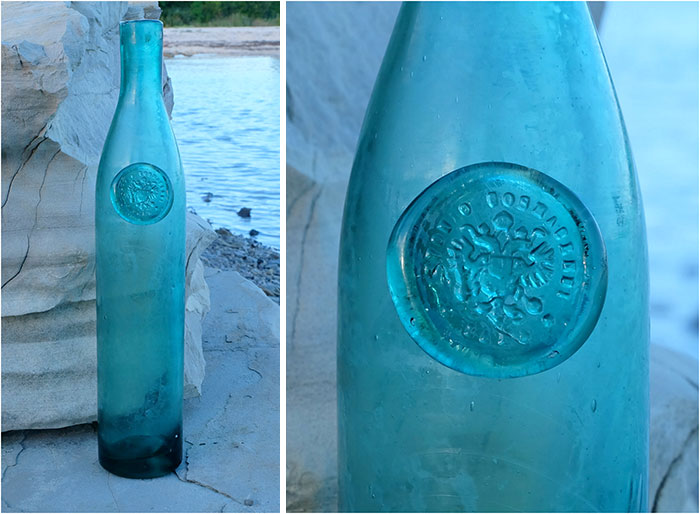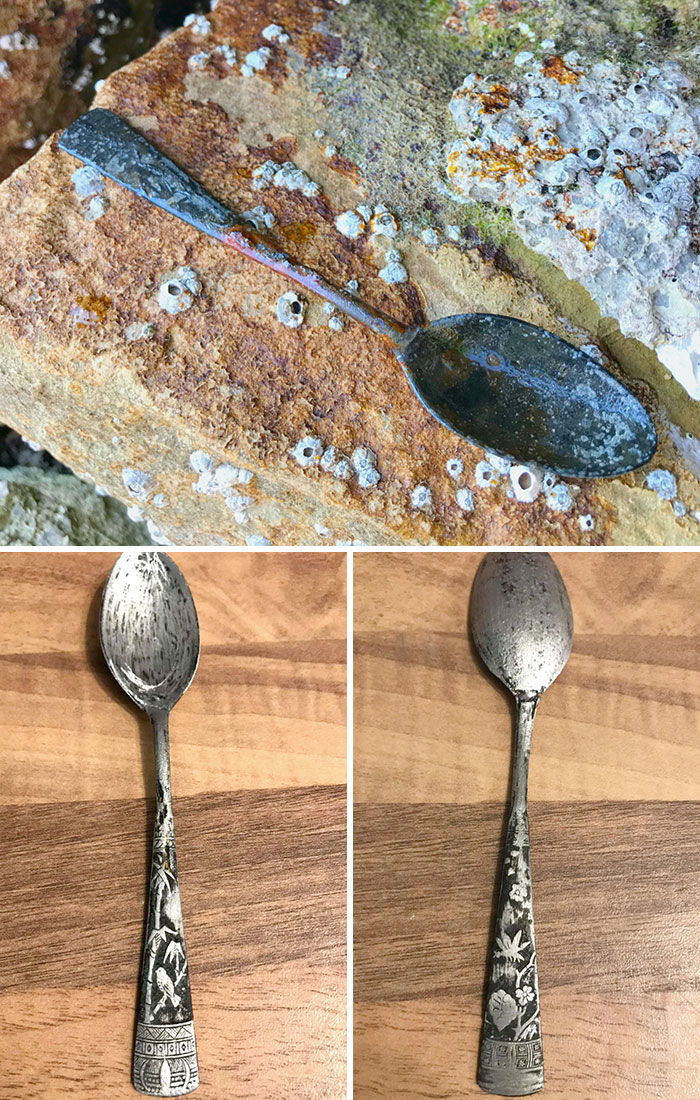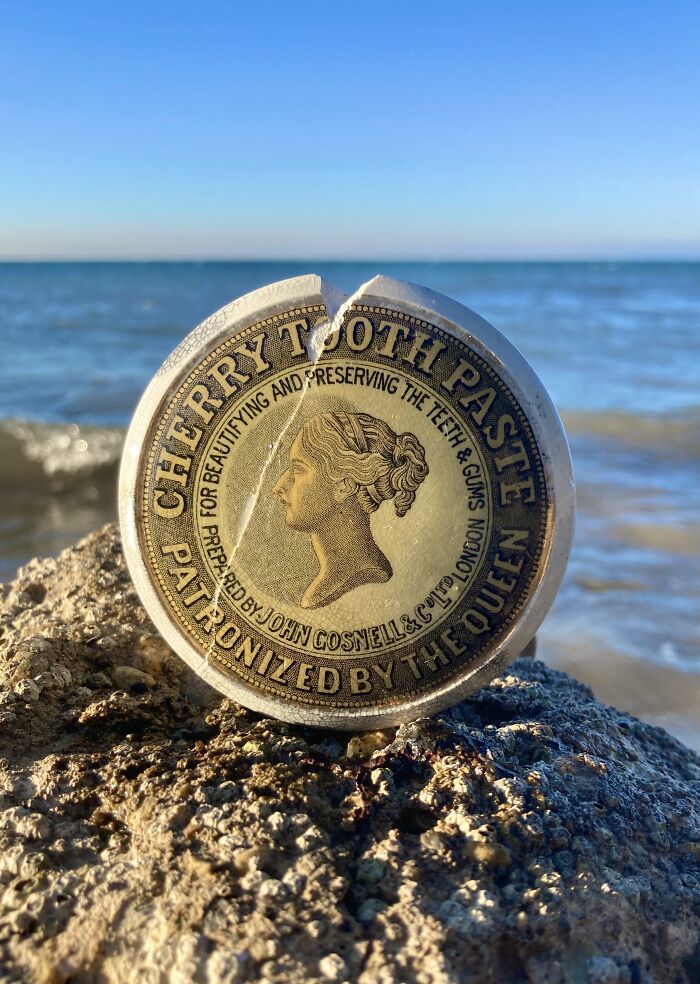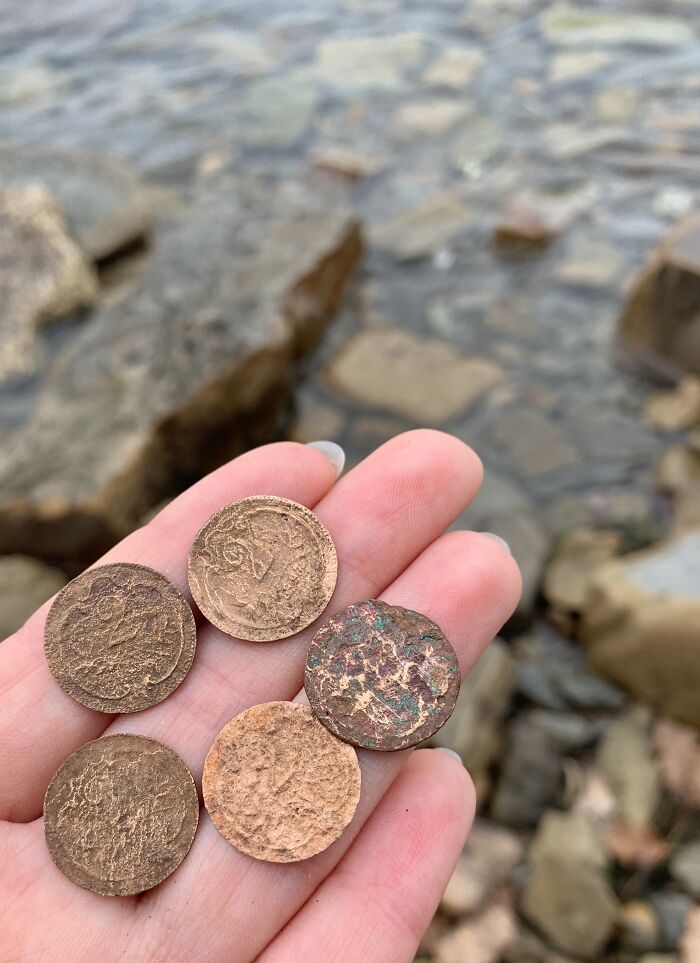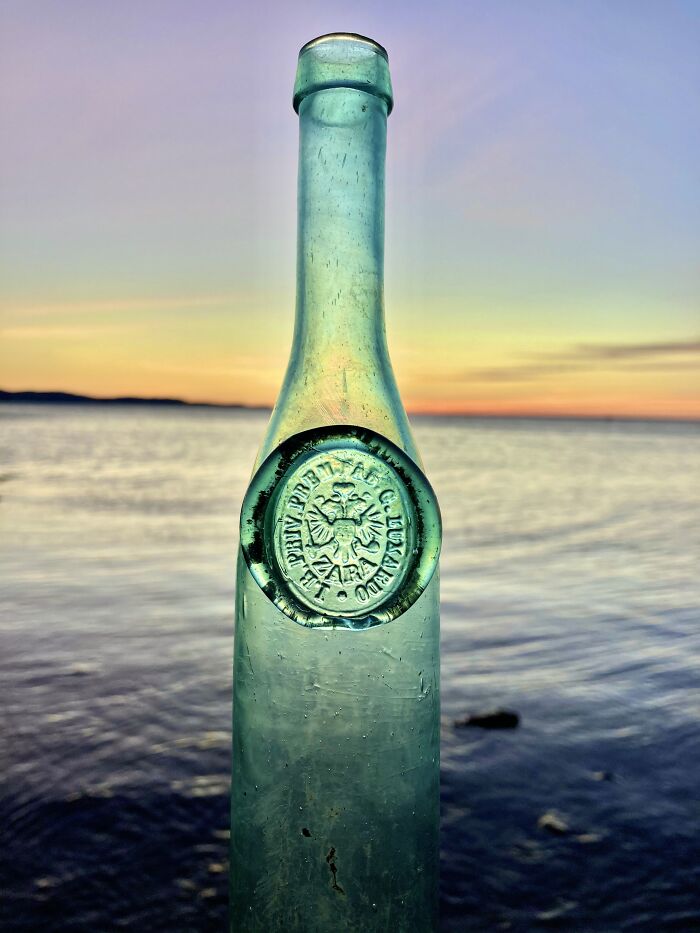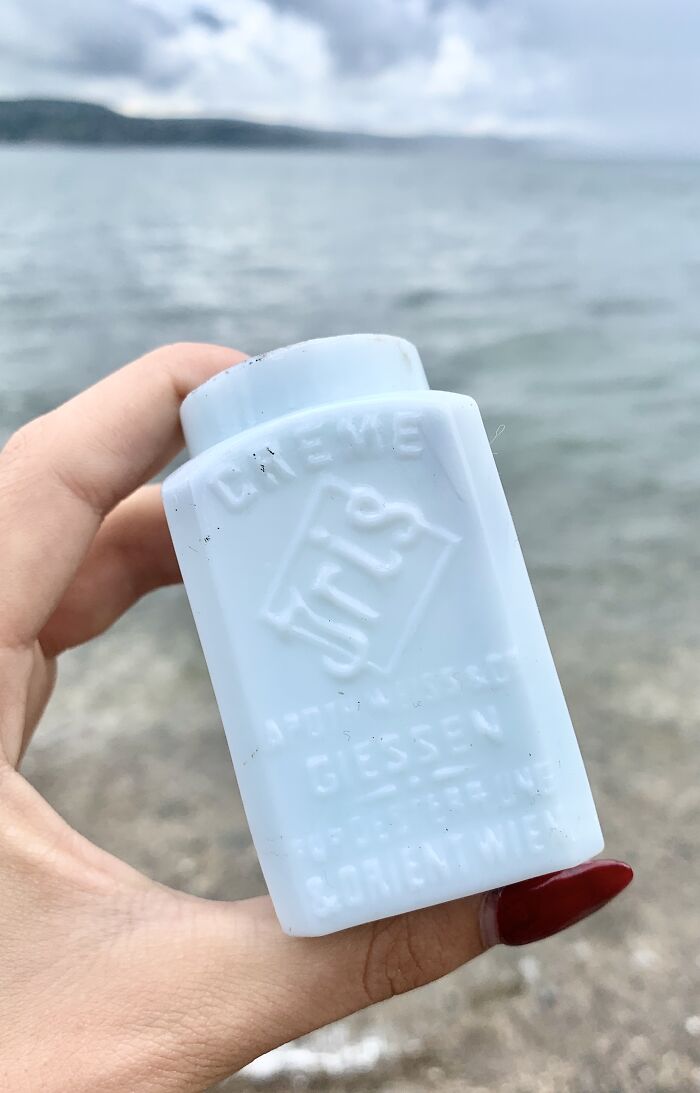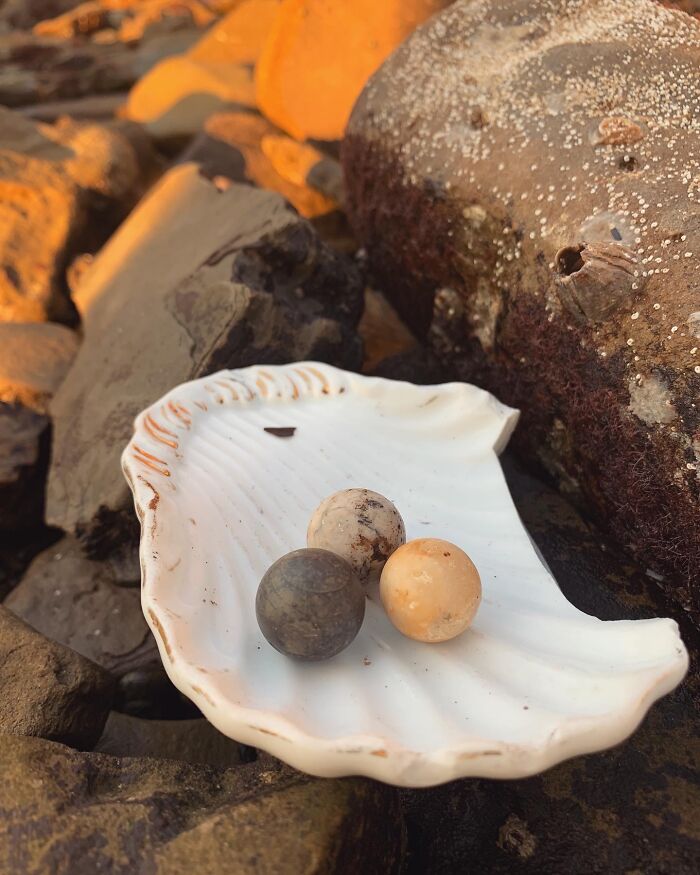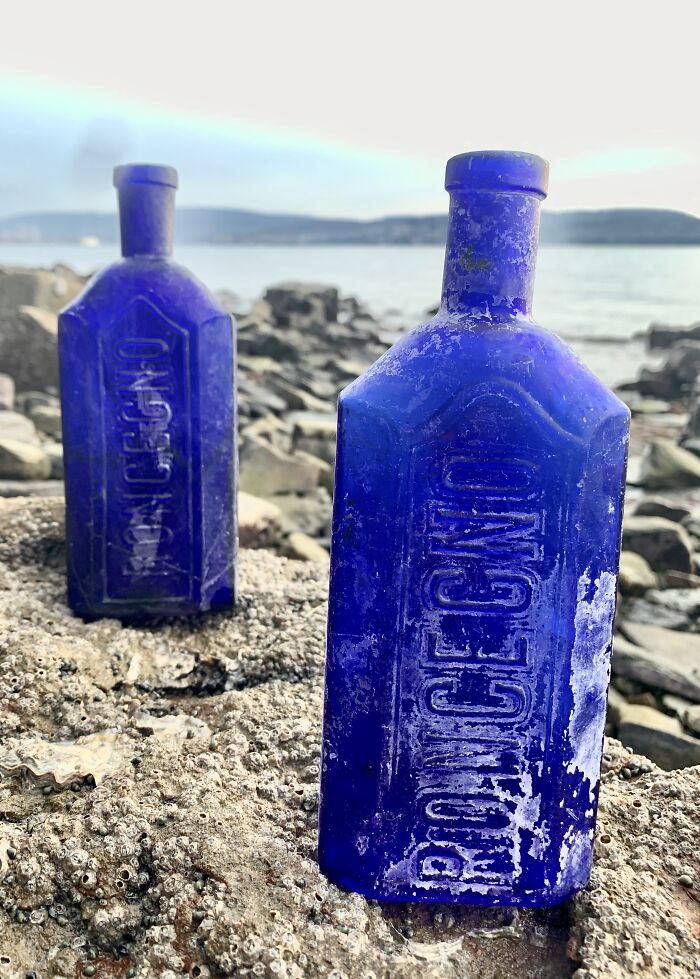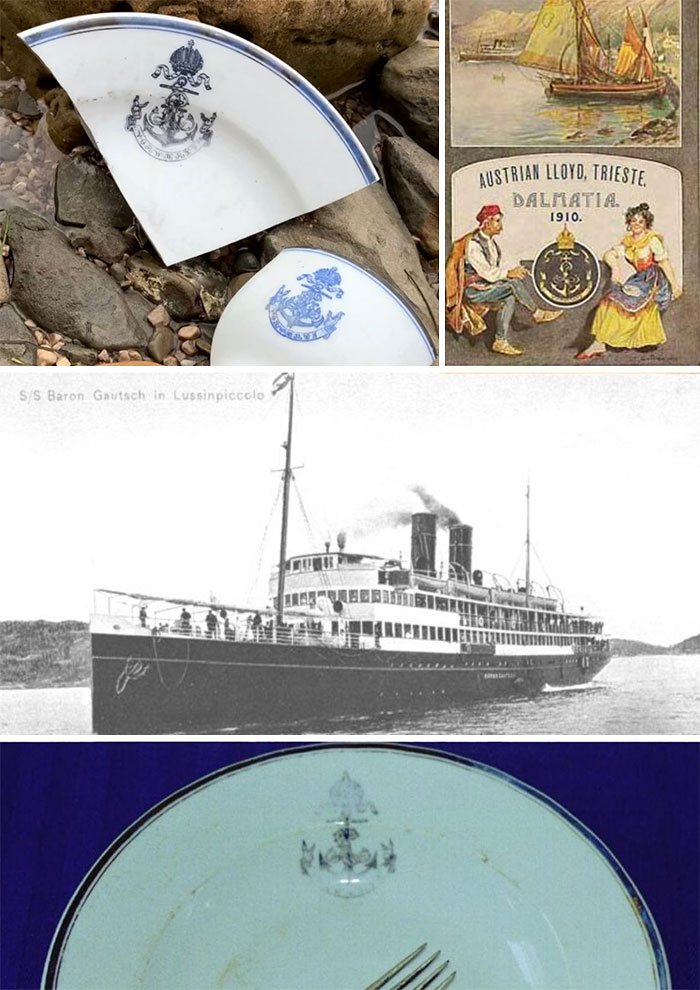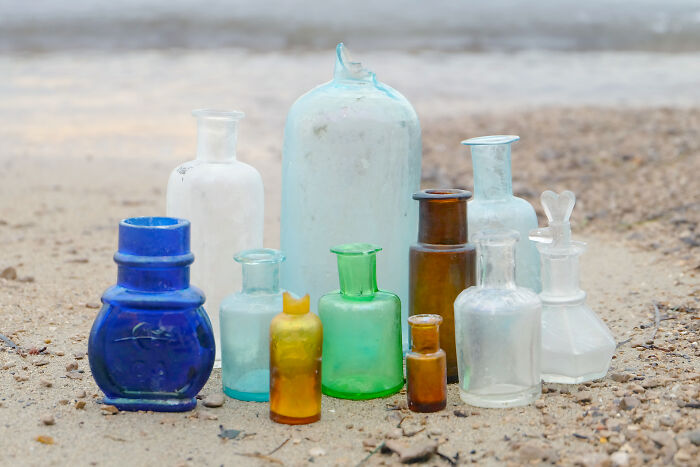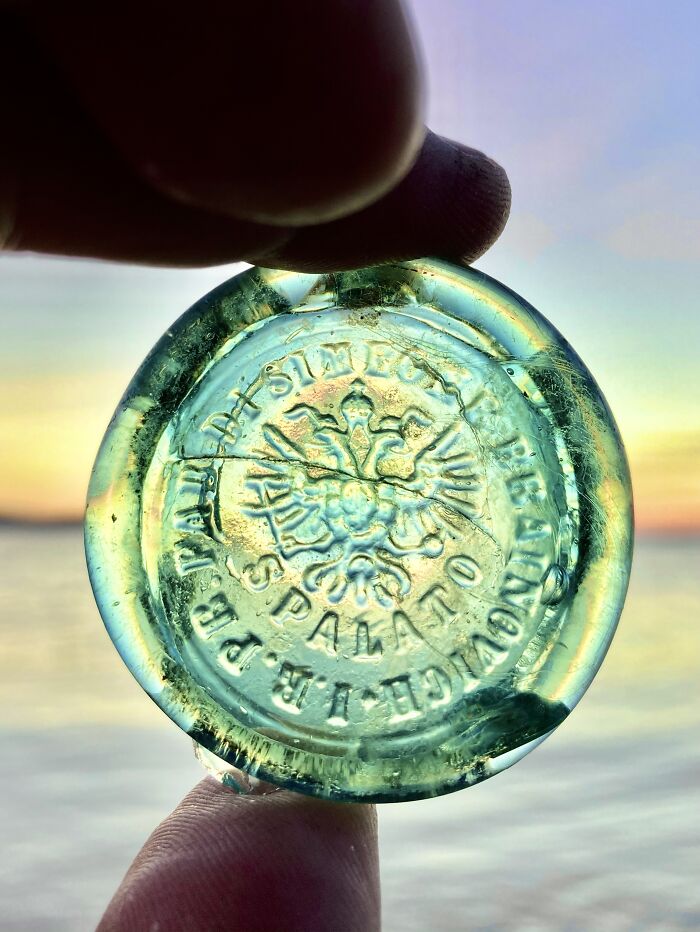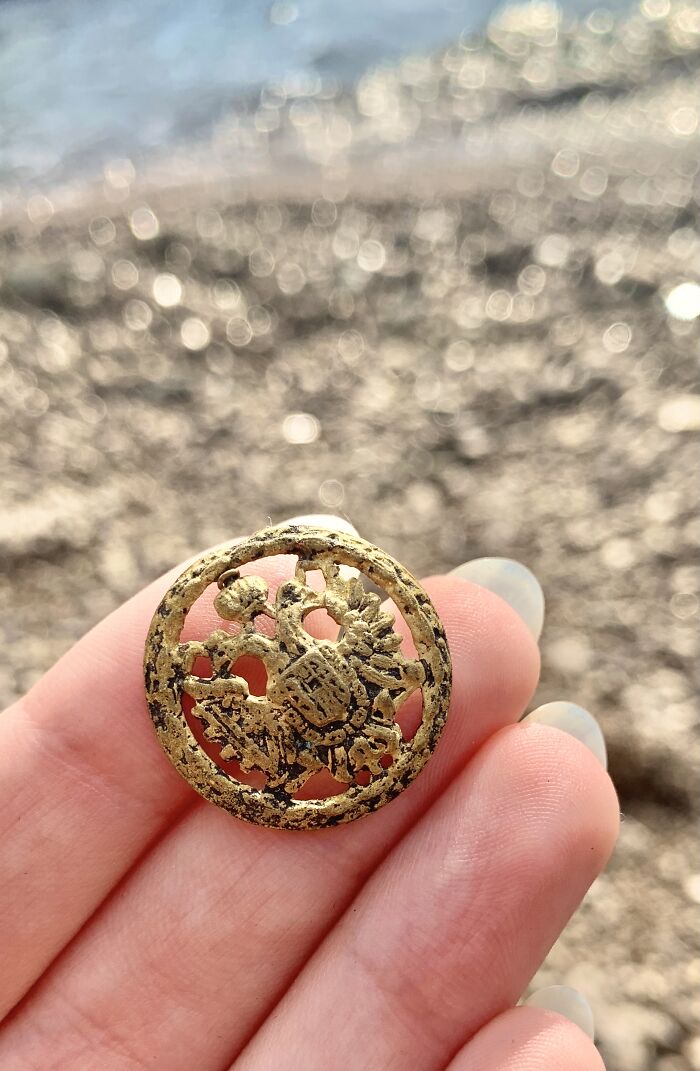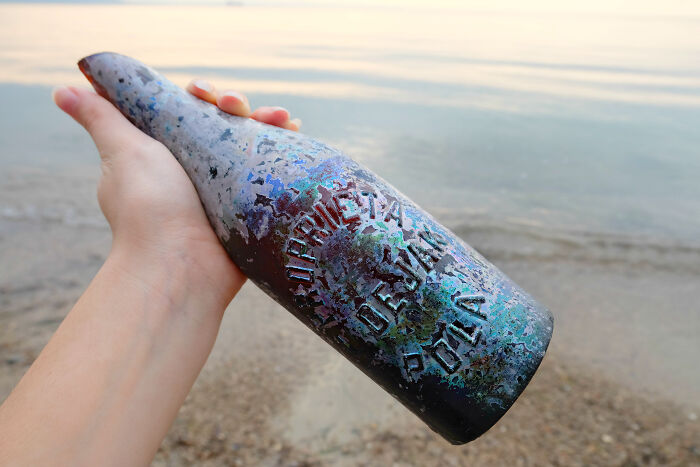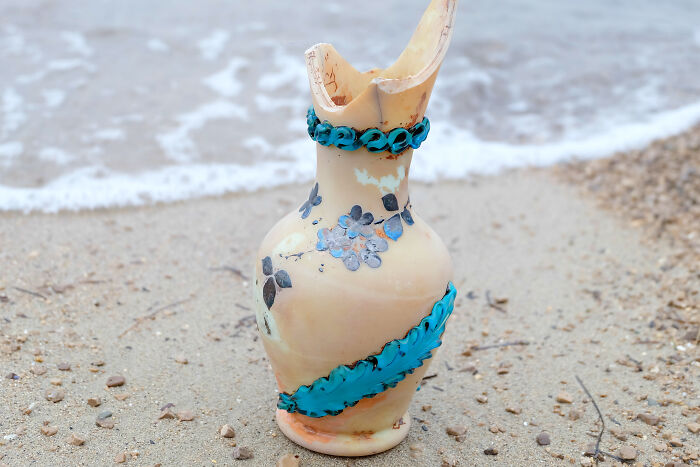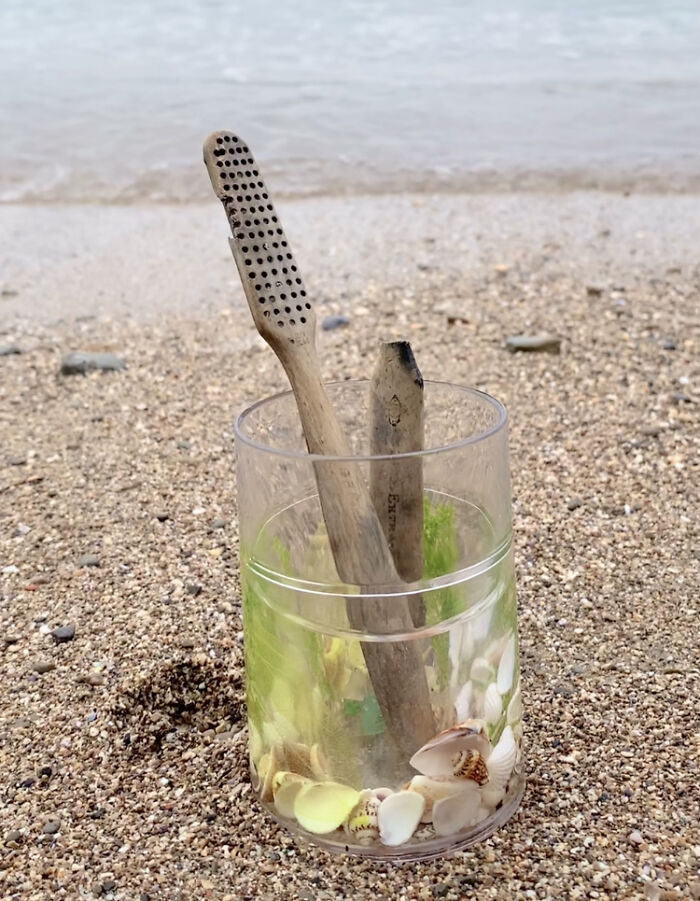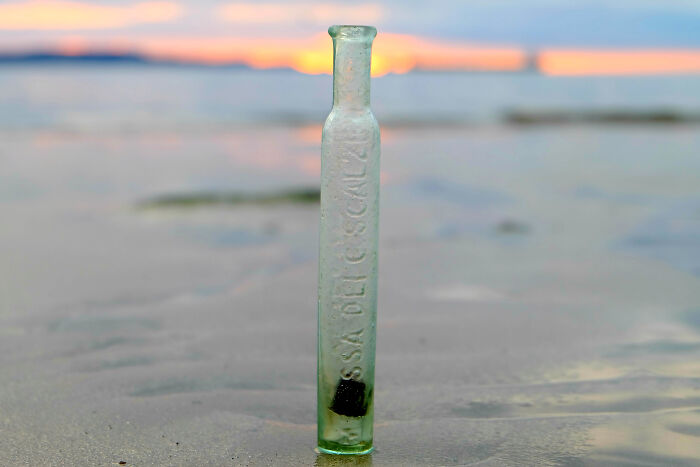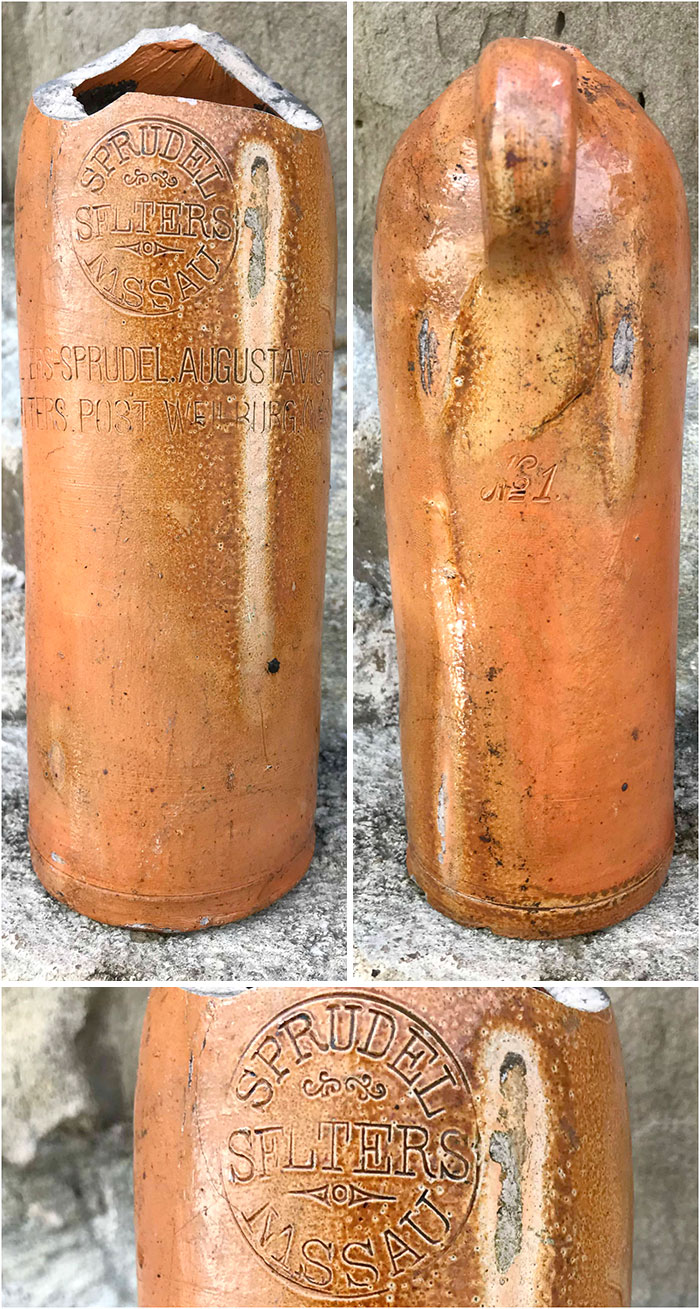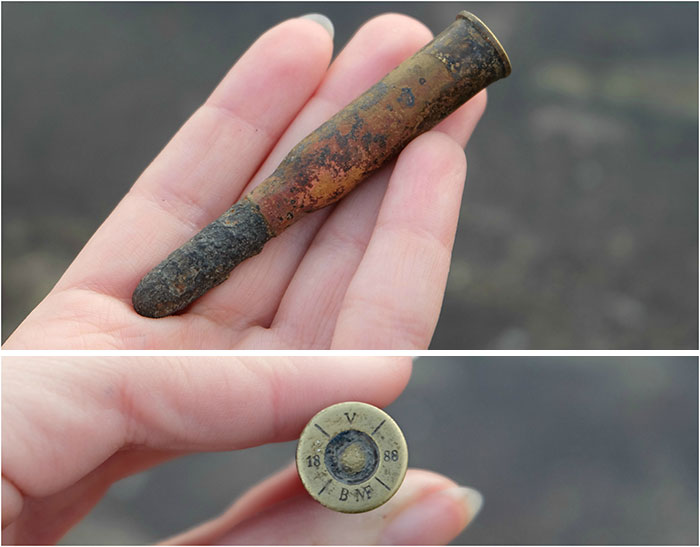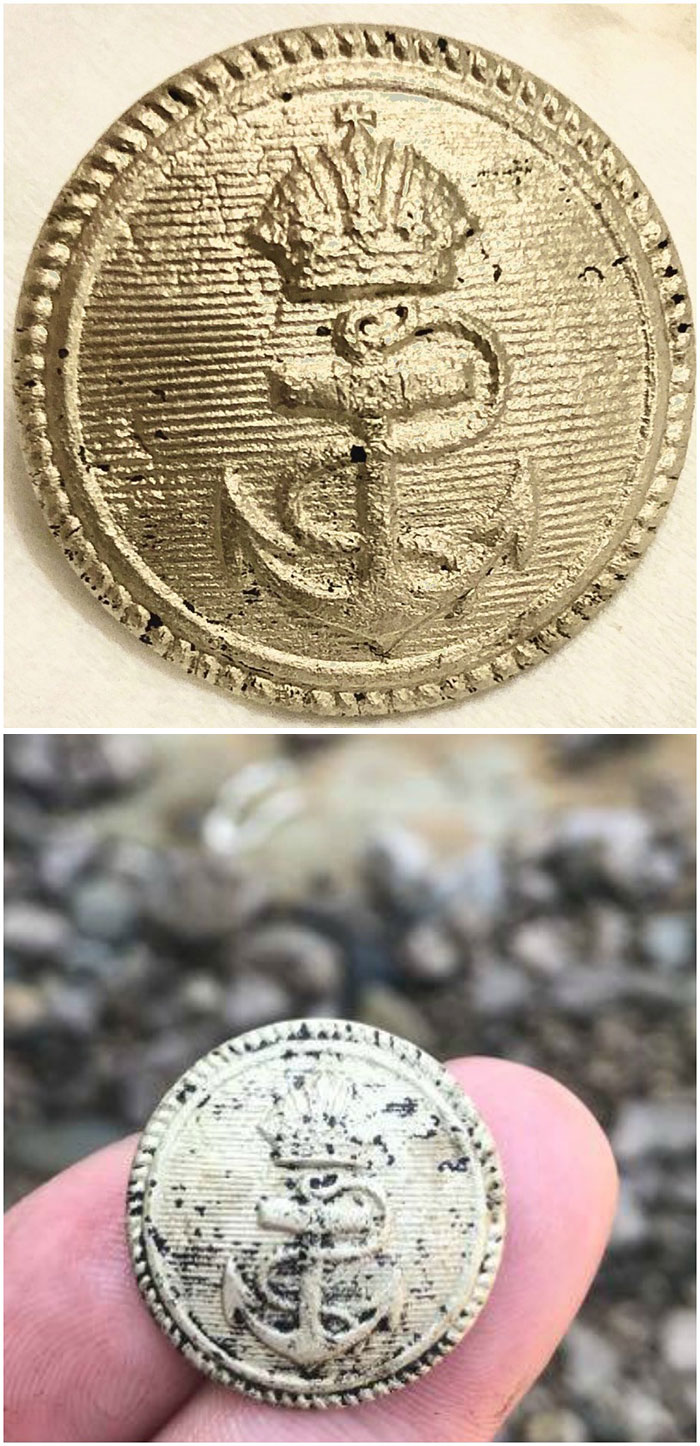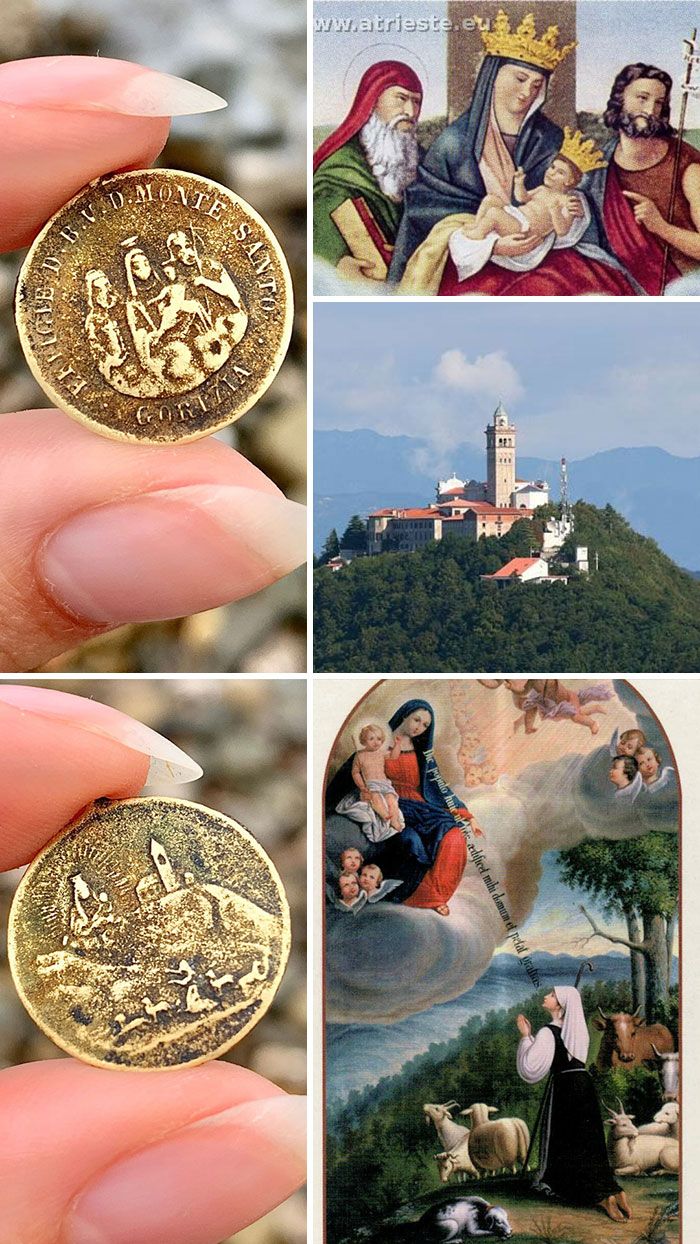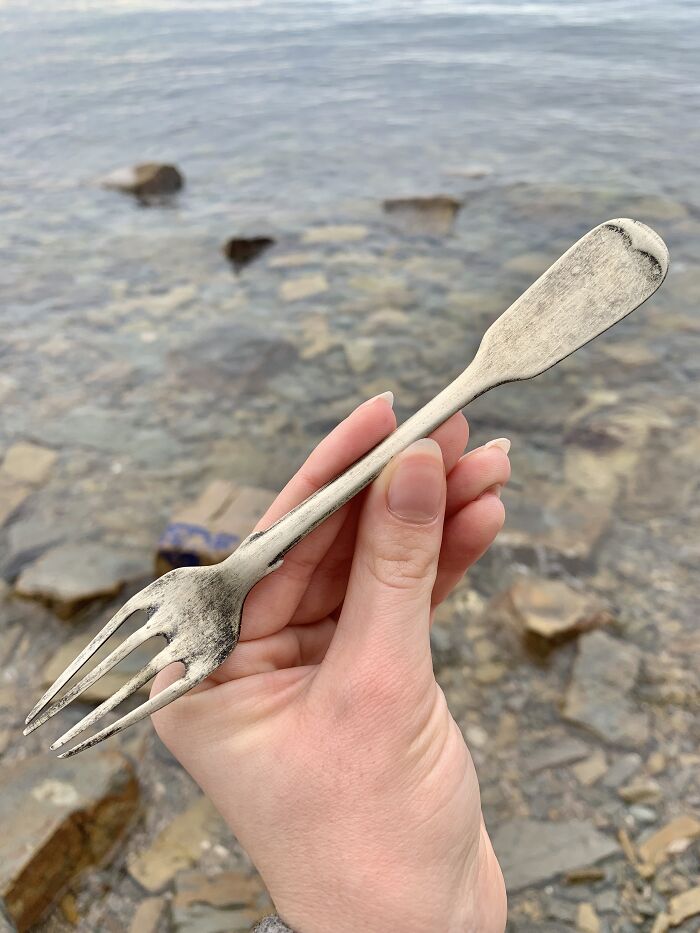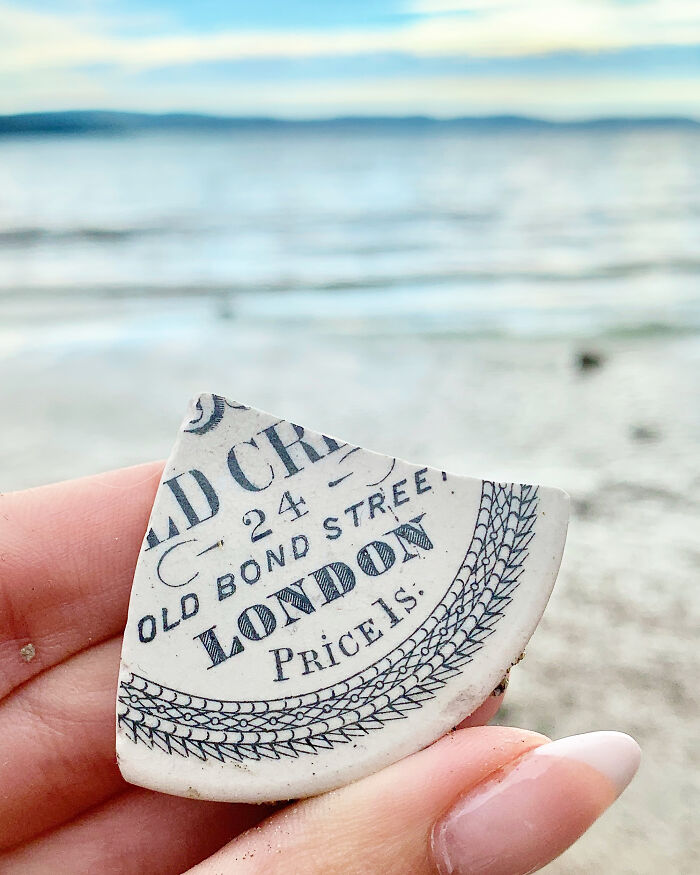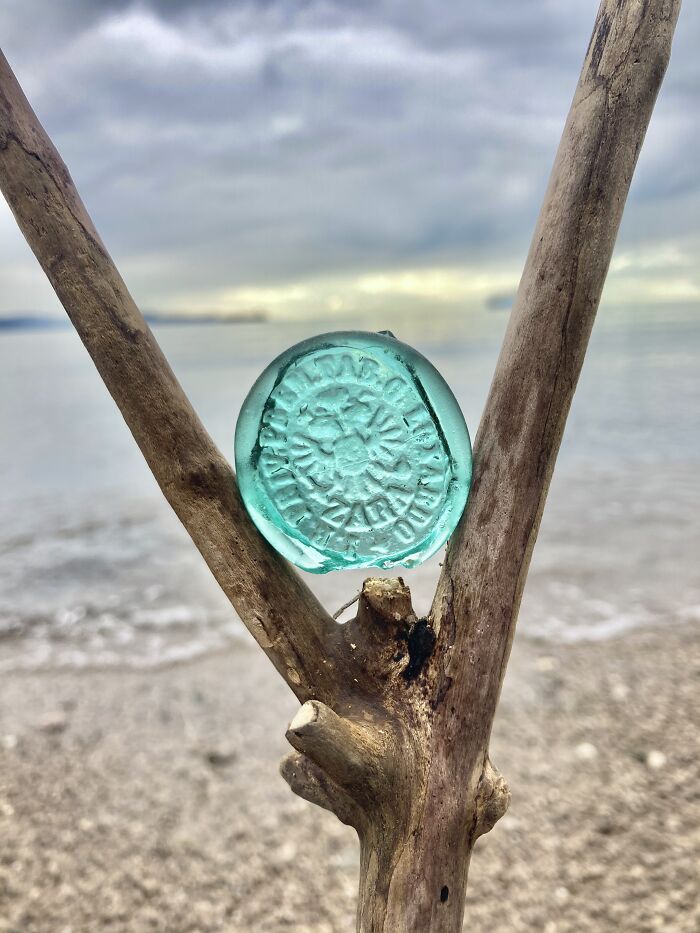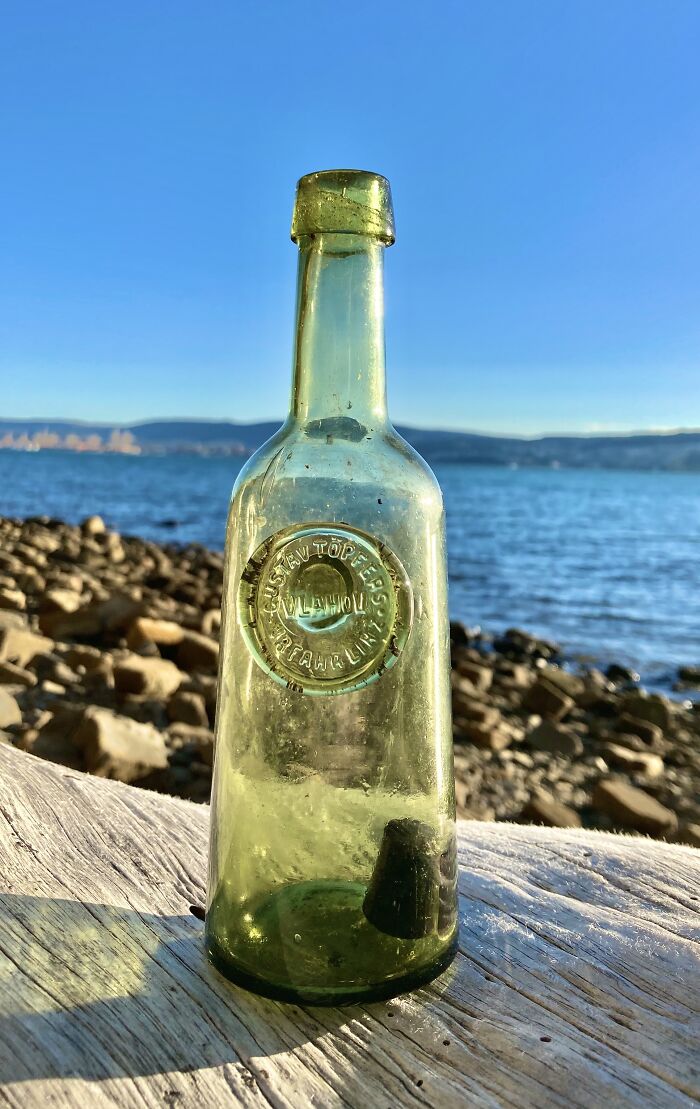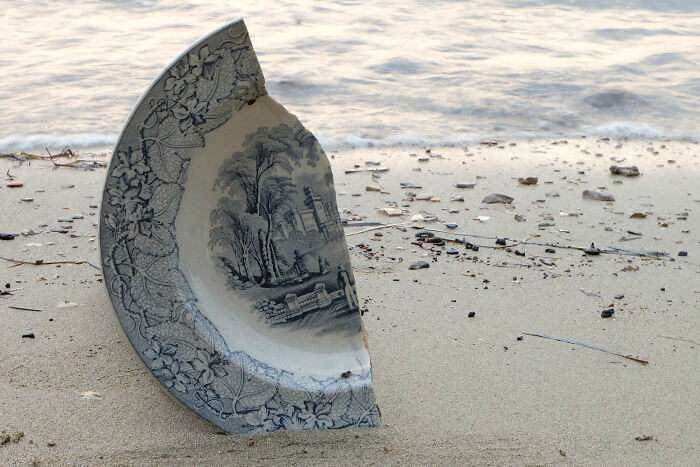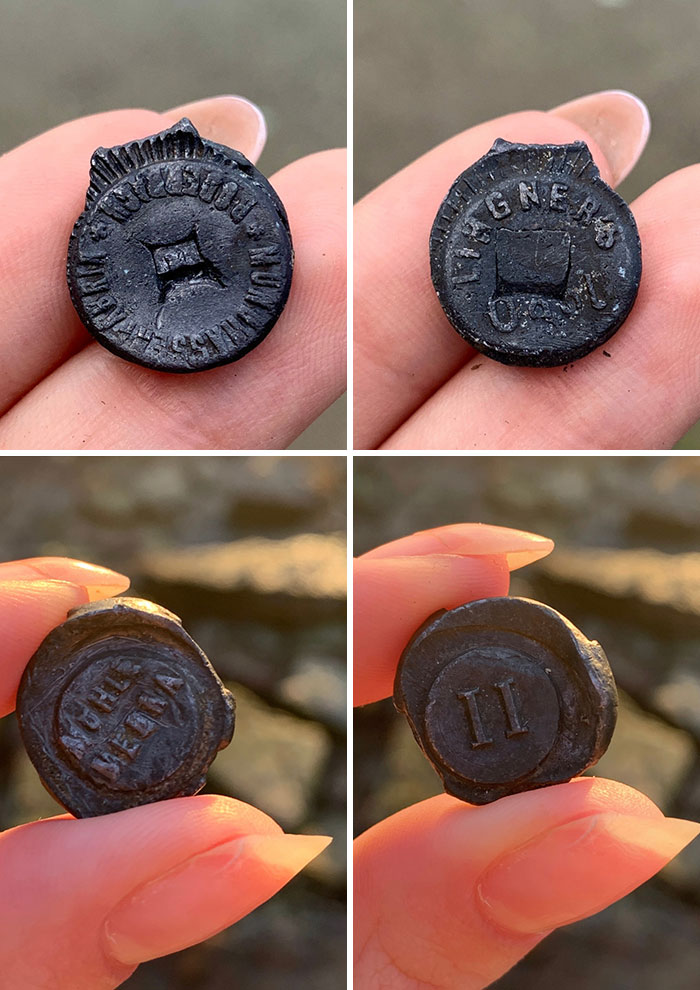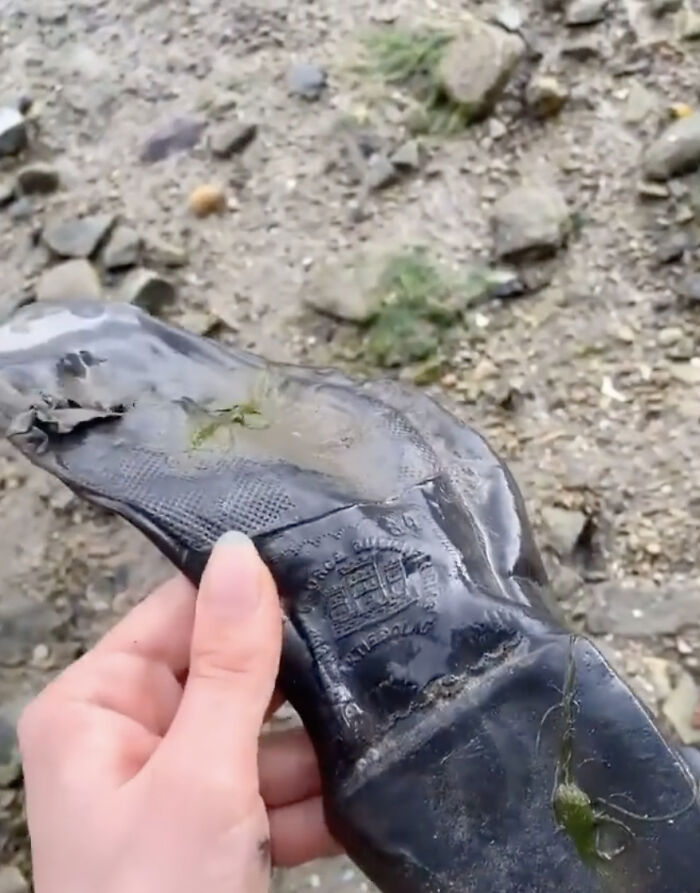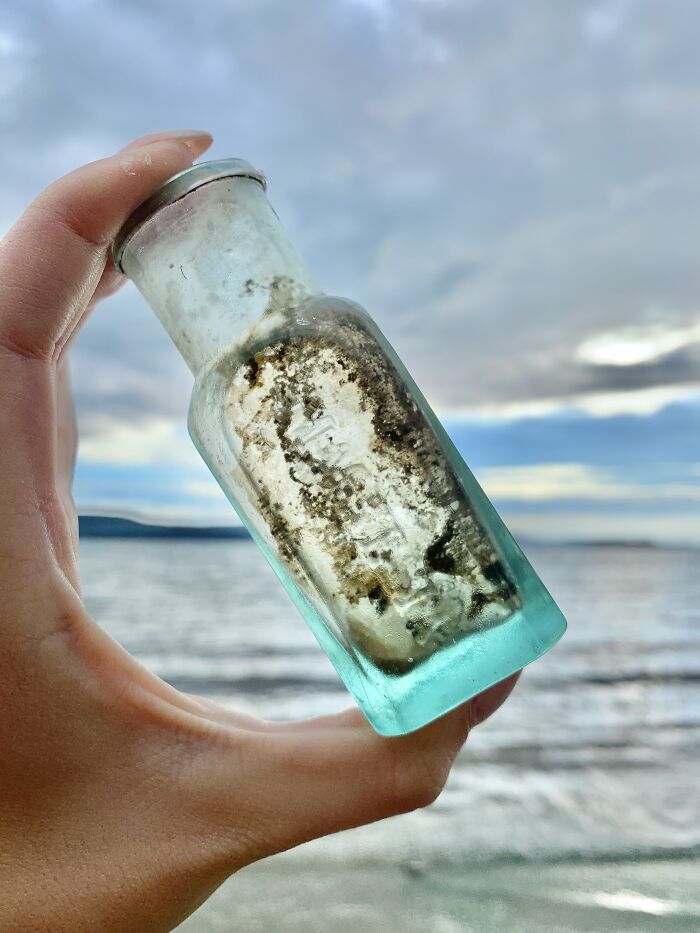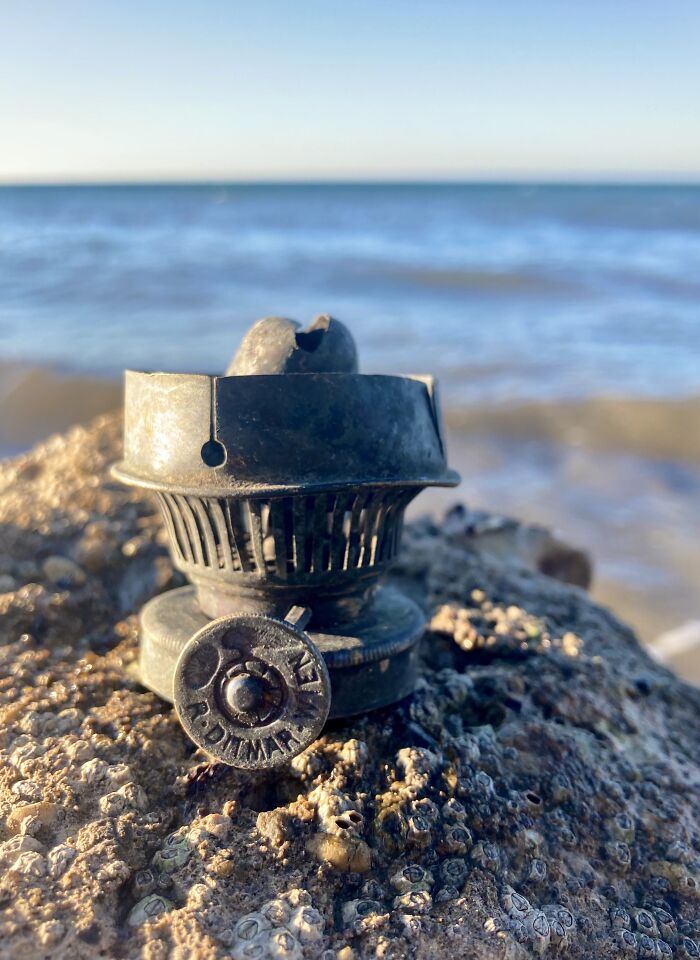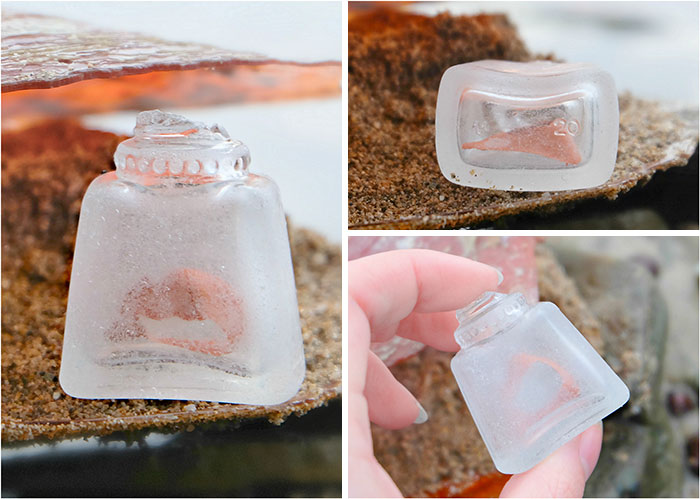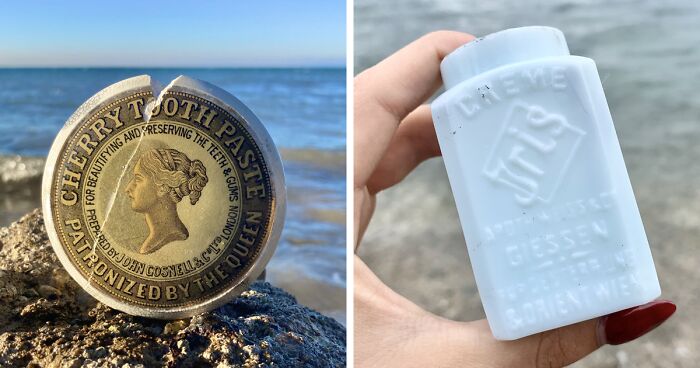
I Search For Treasure That Washes Up On The Beach, And Here Are 30 Of The Most Antique Things I’ve Found
I live in Ankaran, Slovenia, and spend most of my days searching for beach treasures to make beach-themed jewelry.
While searching for seashells on the beach, I was finding a lot of glass, ceramics, old coins, silverware, and other amazing 100-year-old finds. With some research, I found out that I find so many vintage and antique items because in the past (around 100 years ago), Italian ships would come here and dump trash in the sea. Over the years, with the waves and many storms, historic finds that are hidden under the mud in the sea wash up on the beach. Not all finds wash up on the beach. Some are still buried in the sea bed with only a part of it sticking out.
One of my proudest finds is a 200-year-old undamaged Maraschino bottle from the Austro-Hungarian Empire. After finding it, I returned it back home to the Cosmacendi Palace, where the maker of the bottle once lived, and which is now the Museum of Ancient Glass! It was not only an incredible find but also a bottle without any proof that it even existed.
I love using a piece of history in my jewelry and other creations that make it more special and one of a kind. If you are interested in my jewelry, you can find it on my Etsy.
If you want to see my previous posts, click here, here, here, and here.
More info: Instagram
This post may include affiliate links.
200-Year-Old Cosmacendi Maraschino Bottle
One of my proudest is a 200-year-old undamaged Maraschino bottle from the Austro-Hungarian Empire. After finding it, I returned it back »home« to the Cosmacendi Palace (located in Zadar, Croatia), where the maker of the bottle once lived, and which is now the Museum of Ancient Glass! It was not only an incredible find, but also a bottle without any proof that it even existed. The museum was thrilled to have gotten this amazing piece of history and I was over the moon to have contributed to their collection.
Such a gorgeous find, and so good to hear you brought it back 'home'!
I first started collecting tiny seashells for my jewelry from a certain beach that is just a big pile of empty seashells. The shell »pile« was formed after 1990, when the Port of Koper, by deepening the bottom of the second port pier, pumped sludge from the seabed to a nearby location which is in Ankaran. The rain gradually washed away the mud, leaving only the empty seashells. While looking for more seashells on beaches close by I started picking up broken pieces of glass and pottery as I wanted to clean the beach of trash (as many kids swim there). Later on, I discovered that what I was throwing in the trash were 100+-year-old pieces of history.
Vintage Spoon
Victorian Cherry Toothpaste
Victorian Cherry Toothpaste pot lid, made by John Cosnell & Co. London. This find is from 1850-1900. Toothpaste for “beautifying and preserving the teeth and gums.”
I found out that in the past (around 100 years ago), Italian ships would come here and dump trash in the sea. Over the years, with the waves and many storms, historic finds that are hidden under the mud in the sea wash up on the beach. That is when I started collecting them, displaying them in my studio, and using them in jewelry and home decor pieces.
120+ Year Old Coins
These are "Hellers" from the Austro - Hungarian Empire. On one side there’s a double-headed eagle, on the other side the number 2 and the year it was made. On one piece you can see the year 1897! In Austria-Hungary, Heller was the term used in the Austrian half of the empire for 1/100 of the Austro-Hungarian krone (the other being fillér in the Hungarian half), the currency from 1892 until after the demise (1918) of the Empire.
Luxardo Bottle
This bottle is from around 1880/1890 and was once filled with maraschino liquor made by the family Luxardo, as you can see from the glass stamp. They were one of the most famous families making this liquor and even received many awards for it.
Because I was amazed about the history behind the found pieces, I decided to share my research on each piece on my Instagram page. People who follow me were shocked by my antique finds, some couldn't believe that I found these things on the beach. They love the fact that I feature the finds in my designs because I give a purpose to these treasures that were once considered trash.
Bottle Of Creme Jris
Creme Jris was made by pharmacist Weiss & Co. from Giessen, Germany. It was filled with a creme used for facecare. Research time was long because I could not find any information until my aunt who knows German helped me research. I found an advertising stamp and a piece that was probably a part of a newsletter to help me find out what this bottle was filled with and how old it was (100+ years).
Hi! I found an advertisement for this cream in a German newspaper from Munich (digitalised version at my university library) printed in 1896. the manufacturer was Apotheker Weiss & Co stationed in Giessen (Ger) and Wien (Vienna, Austria) and had partners selling their products in Amsterdam, Brussels, Copenhagen and Basel. The cream is called "Iris" (the J is a capital I) and it was used to even out the skin against blemish, redness and the like
Clay Marbles
Antique clay marbles, a popular Victorian toy - dating from the 1800s.
These are much more common to find than glass marbles because they were easier to make and more affordable.
Because I live so close to the beach, beachcombing became my weekly routine. I usually beachcomb 3 – 5 times a week for 2 – 3 hours. I never know what is waiting for me on the beach, so the excitement is what keeps me going. I found so many amazing finds so far. My favorite find (and also the oldest) is a 200-year-old undamaged Maraschino bottle from the Austro-Hungarian Empire.
Roncegno Bottle
The natural mineral water Roncegno, enriched with compounds of iron and arsenic from the eponymous source in northern Italy, near Trento, has been in circulation since the second half of the 19th century.
From 1867, the right to use the spring was bought by the brothers Girolamo and Francesco Waiz, whose company (Dita Fratelli Waiz), in addition to the production of spring medicinal water - Acqua Roncegno - in the 70s of the 19th century took over the building of the thermal spa in Roncegno. Since then, the whole place has experienced a short-lived but notable economic boom. The spa was known throughout the Austro-Hungarian lands, and was advertised in newspapers at the very beginning of the 20th century, most often with the simultaneous advertising of the healing water Roncegno.
Part Of A Plate And Cup From A Shipwreck
ÖSTERREICHISCHER LLOYD was the biggest shipping company of Austria-Hungary and in the Mediterranean. It was founded in 1833.
From 1836 it was used for cargo and passenger travel and was one of the largest shipping companies in the world.
In 1849, the company launched its flagship Vorwarts (Forward), whose name became its motto. With the opening of the Suez Canal in 1869, the company introduced lines to Mumbai, Colombo, Singapore and Hong Kong.
The passenger ship named Baron Gautsch was one of the most beautiful and modern passenger ships of the Austrian Lloyd.
It sailed from the Bay of Kotor on August 12, 1914 on his last, tragic voyage to Trieste, and therefore, given the number of victims, they call it the Adriatic Titanic. It was less than two weeks after the outbreak of World War I.
On the very next day, the ship sailed too close to shore into the area of minefields. As soon as the minesweepers noticed that the ship was entering a minefield, they started sending different danger signals, however, there was no reaction from the ship.
At 14.45 a high pillar of the sea rose on the port side of the ship and then a terrible explosion was heard. In the blink of an eye, the sea turned into a terrifying sight of scattered parts of the ship and passengers floating helplessly, calling for help.
Since around 1992, souvenirs from the ship, have repeatedly appeared on the flea market and in antique shops.
Croatian fishermen repeatedly offered divers the opportunity to dive the "Baron Gautsch" - for good payment, but with no guarantee of finding the wreck.
After finding it, I returned it back »home« to the Cosmacendi Palace (located in Zadar, Croatia), where the maker of the bottle once lived, and which is now the Museum of Ancient Glass! It was not only an incredible find but also a bottle without any proof that it even existed. The museum was thrilled to have gotten this amazing piece of history and I was over the moon to have contributed to their collection.
Different Glass Bottles
Brainovich Glass Stamp
Maraschino bottle stamp made during the Austro-Hungarian Empire time by Simeone Brainovich. I usually find stamps from Zadar (Zara) but this one is from Split, Croatia (Spalato).
100 Year Old (Part Of A) Button From The Austro-Hungarian Empire Times
Antique Beer Bottle
This bottle with the words "Proprieta' L. Dejak Pola" was from a gentleman named Luigi Dejak. He was mostly known for his beer and wine in Pola at the end of the 19th century. His wine received many prizes around Europe for its amazing flavor and quality. This specific bottle was filled with beer.
Victorian Art Glass Vase
The Victorian art glass vase is from the second half of the 19th century. It has an applied trail of blue rigaree citrine glass trailing around the vase and a lovely silver design of a branch with flowers, leaves, and acorns.
Toothbrush With Markings: G. B. Kent & Sons London
Toothbrush with markings: G. B. Kent & Sons London.
Kent Brushes was founded in 1777. They've supplied Royal households with their hairbrushes.
They've been involved in both World Wars, equipping millions of brushes to troops in the Army, Navy and RAF, even creating special brushes in which maps and compasses were concealed to help the war effort.
L’acqua Di Melissa
This bottle, with the words "Melissa dei c scalzi" on one side and "Venezia" on the other, is the famous "l’Acqua di Melissa" – healing water made from the Melissa herb. I have contacted the so-called barefoot Carmelite Fathers of the Venetian Province and they have told me that this bottle was made in the early 1800s.
According to the archives, during lunch in the Carmelite convent in Venice a friar wasn't feeling good, so the father helped him not to faint by giving him the water of Melissa to smell. It is claimed to be the first proof of the use of the magical water, made from Melissa Moldavica, distilled from Carmelite religious since 1710. The recipe for the magical water was written in 1841.
German Company Oberselters Mineral Water Bottle From 1860s
Clay bottle that contained mineral water. It's from a German company named OberSelters that even today sells mineral water. The stamp on this bottle was used only on bottles made from 1836 to 1866.
Hi Maristella! Unfortunately your given information is not entirely correct. This bottle is from the Selters-Sprudel Augusta Victoria (Weilburg, Nassau), which is a different source as the Oberselters (Ober-Selters, Nassau). Both sources still operate and sell mineral water
Rifle Bullet 1888
The 8×52mmR Mannlicher cartridge was first introduced in 1888 for the Mannlicher M1888 rifle. It was made in and also used by the Austro-Hungarian Empire from 1888 to 1890.
Button From An Austro-Hungarian Marine Uniform
A button from the Austro-Hungarian Navy (1867–1918). It was a part of the uniform that sailors working on warships wore.
Monte Santo Pendant
Monte Santo (in Slovenian Sveta Gora) or simply Holy Mountain is a Slovenian mountain located to the northeast of Gorizia (Italian town). The mountain got its name after the apparition of Mary to a shepherdess Orsola Ferligoi in 1539 (picture of the apparition is on the backside of the medallion). During the apparition, Mary said to her: “Tell the people to build me a church here and ask for graces!”. After the shepherdess told what had happened, the authorities didn't believe her. She was thus locked up multiple times, however, Mary freed her each time. After that, the church was built on the top of the mountain, which was then destroyed and rebuilt multiple times. The current church was built between 1924 and 1928. The basilica of the Assumption of the Virgin of Monte Santo, the seat of the Franciscan Convent, has been a pilgrimage destination for the Slovenian and Italian people of Gorizia for centuries.
Vintage Fork
This fork is made from the Alpacca material and is from the 19th/20th century. It has a tiny symbol and the marking C&D on it. Before aluminum came on the scene alpaca was the popular material of the cutlery industry in the years of the 18-19th century. It counted as a rather great achievement, the factories stamped every piece with their own mark. The nice silver color of the alpaca is due to the nickel, extensibility comes from copper and zinc gives its melting ability.
Atkinson's Rose Cold Cream
This is a part of a stoneware pot lid for Atkinson's Rose Cold Cream. Dates late 1800’s to early 1900’s. It was a cream for men to use after shaving and on their lips. It was also a fine rose perfume. His store was at 24 Old Bond Street in London. A street known for prestigious or expensive shops.
Luxardo Glass Stamp
This 100 year old piece with the words "I. R. Priv. Prem. Fab. G. Luxardo ZARA" around the double-headed eagle (representing the Austro-Hungarian Empire) is a seal from a bottle that carried the famous Maraschino cherry liqueur - made from wild cherries named Marasca. Girolamo Luxardo is an Italian liqueur factory founded in 1821 in a city previously named Zara (today Zadar, Croatia) but later moved to Torreglia near Padua in Italy. In 1829, the great quality of the Maraschino Luxardo was certified with a ‘privilege’ awarded by the Emperor of Austria. They still sell the liquor today.
Vlahov Liqueur Bottle
Last year I found this amazing green bottle on the beach sticking out of the sea bed. After months of research, I’ve found barely any information about it. This can be a special edition of the bottle made in collaboration with Gustav, filled with Vlahov liqueur. Gustav Topfer was also a producer and trader of alcoholic beverages that he made himself. This bottle was probably made in 1890 - 1910 and exported to Linz (Austro-Hungarian Empire, now Austria).
Half Of A French Plate From 1860s
Lead Bale/Cloth Seals
Lead seals were affixed to goods to communicate information such as place of origin, manufacture, quality, size, circulation, and taxation. Lead seals are the colonial equivalent to today’s merchandise tag. Most commonly associated with textiles, lead seals marked everything from tobacco and salt to bundles of various trade goods. Easily molded, a lead seal was affixed to a bale of goods at its place of origin (typically somewhere in Europe) and remained unmolested until the goods reached their final destination. They were used from the 17th to the 19th century.
Galosch Footwear
Helsingborgs Gummifabriks AB was a Swedish rubber industry company.
For a large part of the 20th century, it was by far the largest workplace in Helsingborg, with at most more than 3,000 employees, of which a large proportion were women.
The company was founded in 1891 on the initiative of Johan Dunker. The company's main product was galoshes.
Galosch (from the French galoche) is footwear and is used as a shoe cover over shoes (especially more expensive shoes) in order to prevent them from getting wet or soiled.
It's very interesting, in my language (Polish), "galosch" is "kalosz", which sounds almost the same :) I didn't know it was a French word!
Magnesia Bottle
Kerosene Lamp Burner
A part of a 1850s R. DITMAR Wien kerosene lamp burner. Brothers Rudolf and Fredrich Ditmar relocated from Germany to Austria (Vienna) in 1839 where they traded in oil lamps. In 1841 they started their own lamp factory. A decade later they succeeded in developing the “moderator lamp” that could be used reliably thanks to having an option to adjust the intensity of the flame. The international success enabled the further expansion of the company, which continued after Friedrich Ditmar's death as "Lamps and Metalware Factory R. Ditmar".
Manufacturer seems to be R. Ditmar in Wien (Vienna, Austria) est. end of 19. century
Nail Polish Bottle
This was really interesting. It makes me wonder how much of our discarded junk will still be washing up on beaches in 200 years
Luckily, the glass and pottery didn't really have a huge impact on sea life. Sadly, junk nowadays is (only) plastic - so I am scared of what will happen with the sea in 200 years.
Load More Replies...These are very interesting and beautiful finds. Thanks for sharing and for the history of the items. WOW! Lucky you!!!!
Thank you! Glad you enjoyed reading the article :D
Load More Replies...This was really interesting. It makes me wonder how much of our discarded junk will still be washing up on beaches in 200 years
Luckily, the glass and pottery didn't really have a huge impact on sea life. Sadly, junk nowadays is (only) plastic - so I am scared of what will happen with the sea in 200 years.
Load More Replies...These are very interesting and beautiful finds. Thanks for sharing and for the history of the items. WOW! Lucky you!!!!
Thank you! Glad you enjoyed reading the article :D
Load More Replies...
 Dark Mode
Dark Mode 

 No fees, cancel anytime
No fees, cancel anytime 






